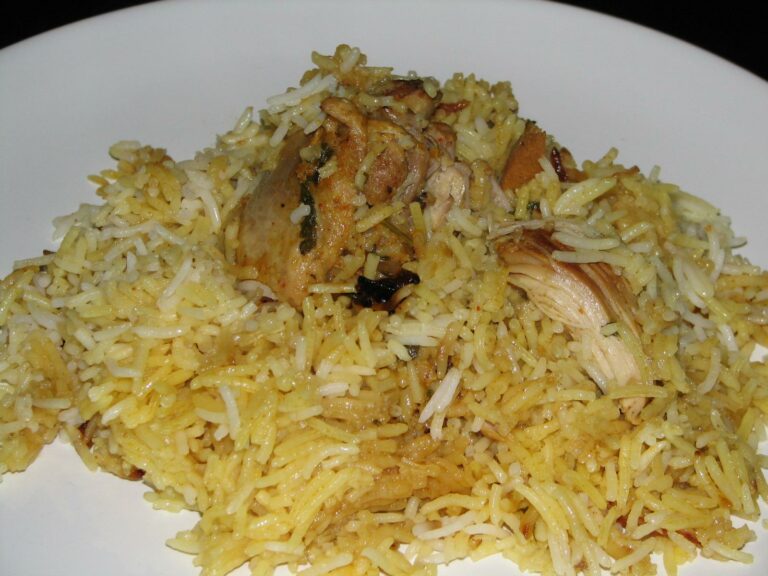Introduction: The fusion of cuisines in Kuwait
Kuwait is a country that has a rich history and cultural diversity. Due to its geographical location, it has been influenced by various cultures, including Indian and Persian cultures. Over the centuries, these cultural influences have permeated into Kuwaiti cuisine, bringing a unique blend of flavors and spices to the table.
The blending of Indian and Persian cuisines with Kuwaiti cuisine has resulted in a diverse and flavorful culinary experience. The fusion of these cultures has created one of the most unique and exciting culinary experiences in the world.
Historical context: Indian and Persian influences on Kuwaiti cuisine
The influence of Indian and Persian cuisine on Kuwaiti cuisine dates back to the 18th century. The Persian Empire ruled Kuwait until the 18th century, and Indian migrants came to Kuwait in the 19th century. These cultural influences are evident in Kuwaiti cuisine, which is a blend of Arabian, Persian, and Indian influences.
The Persians introduced the use of rice, saffron, and rosewater, which are now common ingredients in many Kuwaiti dishes. Indian influences can be seen in the use of spices such as cardamom, cumin, and coriander. Kuwaiti cuisine has been influenced by other countries as well, such as Iraq, Turkey, and Egypt.
Ingredients and spices: The commonalities between Indian, Persian, and Kuwaiti cuisines
The ingredients and spices used in Indian, Persian, and Kuwaiti cuisines share some commonalities. Rice is a staple in all three cuisines, and saffron is used in biryanis and other dishes. Rosewater is used in desserts and drinks in all three cuisines.
Spices such as cumin, coriander, and cardamom are common in all three cuisines. The use of nuts, such as pistachios and almonds, is also common in all three cuisines. The blending of these ingredients and spices has resulted in a unique and flavorful culinary experience.
Popular dishes: Examples of Kuwaiti dishes with Indian and Persian influences
Some popular Kuwaiti dishes with Indian and Persian influences include Machboos, a rice dish with meat and spices, and Ghozi, which is a roasted lamb dish. Kebabs, which are skewered meats, are also popular in Kuwaiti cuisine and are influenced by Persian cuisine.
Other dishes that are influenced by Indian cuisine are Samosas and Kebabs. Samosas are a popular snack that is filled with meat and spices and fried to perfection. Kebabs are skewered meats that are marinated in spices and cooked over an open flame. These dishes showcase the blending of Indian and Persian cuisines with Kuwaiti cuisine.
Culinary techniques: The art of blending flavors in Kuwaiti cuisine
Culinary techniques used in Kuwaiti cuisine are a blend of Indian, Persian, and Arabian styles. The use of spices and herbs is crucial in Kuwaiti cuisine, and blending them together requires skill and technique. The use of a Tandoor oven, which is common in Indian and Persian cuisine, is also used in Kuwaiti cuisine to cook bread and meats.
Kuwaiti cuisine also uses a lot of marination techniques to infuse flavors into meats. The use of yogurt and sour cream in marinades is common in Kuwaiti cuisine and is a technique used in Persian cuisine as well. These culinary techniques have resulted in a unique and flavorful culinary experience.
Conclusion: The cultural significance of Kuwaiti cuisine
Kuwaiti cuisine is a blend of various cultural influences, including Persian and Indian cultures. These cultural influences have resulted in a unique and flavorful culinary experience that showcases the blending of flavors and spices. Kuwaiti cuisine is not only a reflection of the country’s history and culture, but it also represents its people’s love for good food.
The blending of Indian and Persian cuisines with Kuwaiti cuisine has resulted in a culinary experience that is unique to Kuwait. The use of spices, herbs, and marination techniques has resulted in a diverse and flavorful culinary experience that is unmatched. Kuwaiti cuisine is not only a reflection of the country’s cultural diversity but also its rich history, making it a culinary experience that is not to be missed.

